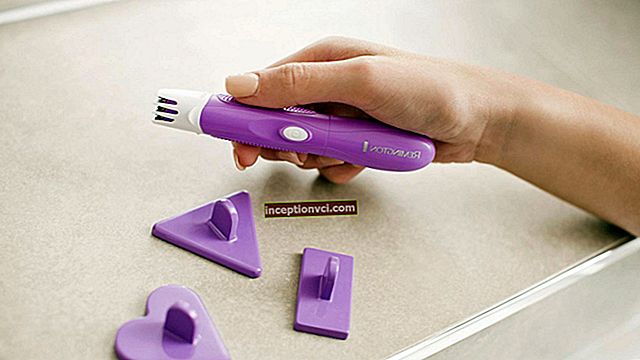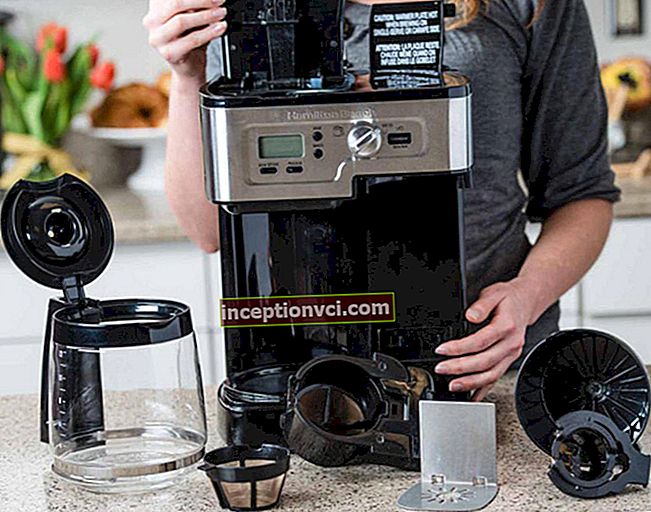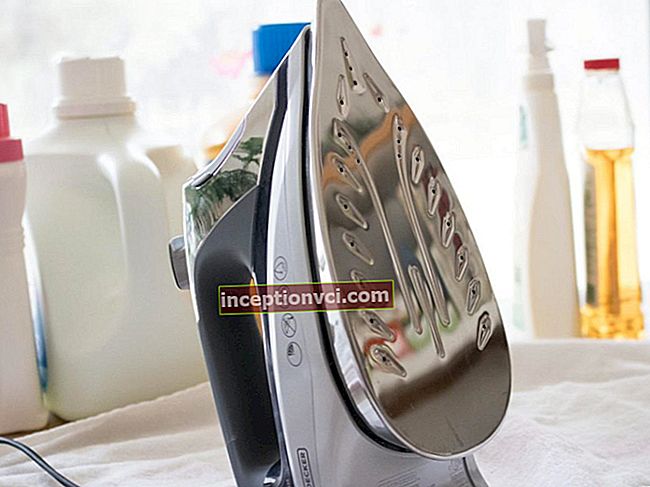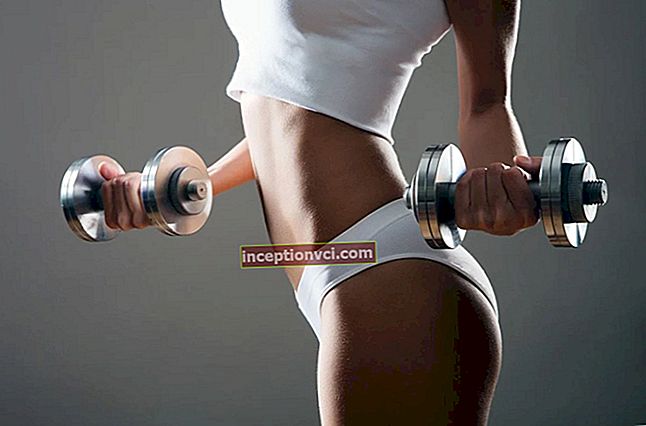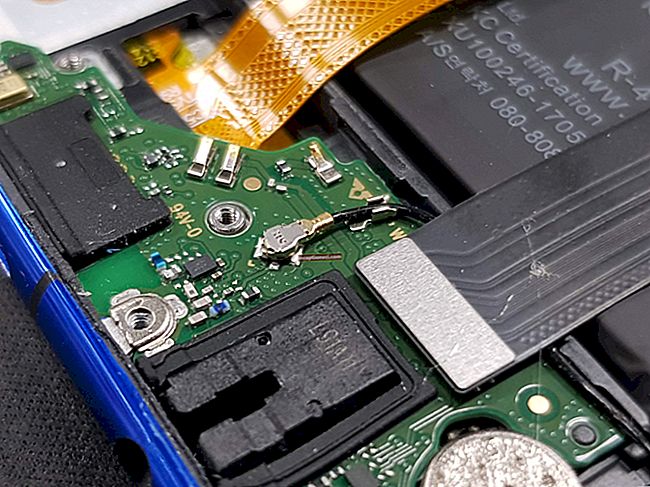
The advent of the vacuum cleaner can be dated to the twentieth century. In one of London's concert halls, this marvelous machine was shown, capable of blowing a huge amount of dirt from a dozen old carpets.
After such a show, it was suggested not to blow out the dirt, but to suck it in. This led to the emergence of this type of vacuum cleaner, which we still use today. According to one version, it was the demonstration in the London concert hall that led to the emergence of the modern vacuum cleaner. According to another version, one English engineer coughed from a cloud of mud that formed near the car, which was cleaned with a stream of compressed air.

It was then that the inventor decided to create a machine that sucks dirt into a bag. The very first vacuum cleaner made a lot of sounds. Powered by gasoline, it was equipped with a vacuum pump. Its power was about five horsepower, and in terms of its dimensions, it could only fit in large rooms. That is why, he was often dragged out into the street and carpets were cleaned there.
It was at this time, in all Russian newspapers, there was an advertisement for such a unit as a vacuum cleaner. On the pages of the newspapers, a wagon was depicted, which was harnessed by horses, and from behind an open door was visible a huge mechanism consisting of cylinders, gears and a flywheel. From this mechanism, hoses were extended to the balcony of the house, which were held by two people. Everywhere the words: purity, speed and reliability were developed as a banner.

This invention was popular not only in Russia, but also in London. Although there was a time when in London it was forbidden to use such a unit on the street, as it greatly frightened horses with its sound.
The design of the vacuum cleaner was developed back in the nineteenth century. Only for its implementation, a source of energy was needed, which appeared only in the next century. This source was a three-phase motor developed by a Russian genius.
The first vacuum cleaners that moved to homes were released a little later. It was the Americans who contributed to their appearance in the home. One of the very first such cleaners was a vacuum cleaner, which was released in one thousand nine hundred and five. Many models of vacuum cleaners invented at that time are still considered the benchmarks of modern vacuum cleaners.

One of these models resembled an inverted bucket with a wooden handle. At the bottom of the handle was a dirt bag, which was sewn from gauze, and satin on top. Manufacturers said that this vacuum cleaner draws in dirt from any, even the most inconspicuous cracks, and can also be used to dry hair as soon as possible. Unlike other vacuum cleaner models, this sample was quite compact and weighed about twenty kilograms. Other vacuum cleaners weighed up to fifty kilograms.
A model of a classic vacuum cleaner was funded by an American developer, which consisted of a brush, a bag and a motor between them, attached to one handle.
Later, Europeans suggested replacing the air pump with a fan. It is thanks to this replacement that the weight of the vacuum cleaner itself has significantly decreased. He began to weigh a little over ten kilograms. A huge success was accompanied by such a model of a vacuum cleaner, which was a moving cylinder with a brush and a hose attached to it. In addition, such a vacuum cleaner was equipped with replaceable attachments. After the appearance of this model of the vacuum cleaner, all subsequent ones were its copy.
This invention quickly spread among the richest gentlemen. It was thanks to the vacuum cleaner that order was restored much faster in the houses, but not by the gentlemen themselves, but by their servants.
Housewives believed that, at the same time as the dirt, the vacuum cleaner rid them of germs. One well-known magazine, in its articles on vacuum cleaners, wrote that with the advent of such machines, a new life begins for housewives.
Further improvement of the vacuum cleaner
Further development of the vacuum cleaner was suspended for almost ten years. The reason was the Second World War. When conducting surveys about the operation of vacuum cleaners, the general enthusiasm significantly diminished. There were also found some shortcomings in its work. One of them was that when working, the vacuum cleaner made a lot of noise. It was also not light enough, and the suction power could fluctuate. With strong power, the brushes could not be torn away from the surface, and with low power, only large particles of dirt could be collected. The main drawback was associated with filtration. All the treated air, passing through a special cleaning system, returned the finest dust to the environment.
It was not possible to combine only positive characteristics in the vacuum cleaner. With the help of hand-held vacuum cleaners, it was possible to remove dirt under furniture, vacuum curtains, and also collect garbage in places that are inaccessible for cleaning by hand. near baseboards and in the corners of rooms. The cases of portable vacuum cleaners were covered with special slats to protect the furniture.
Washing vacuum cleaners were invented for cleaning carpets. Now, in stock they began to produce not one, but several filters for suction and protection of the environment from pollution.
In the sixties, vacuum cleaners began to appear, which combined wet and dry cleaning. They were equipped with an apparatus for separating liquid and solid particles. At the same time, it became possible to collect water around the pools, sand and earth from garden paths and terraces.
Only now, Soviet vacuum cleaners copied Western models.
Each time, the models of vacuum cleaners have improved more and more. They became lighter and more powerful, endowed with new functions and a set of attachments. By the eighties, a third of the population of developed countries had a vacuum cleaner in their homes.
Repeated changes made to the design of the vacuum cleaner constantly encountered contradictions that were originally laid down in the idea of a vacuum cleaner. I wanted to reduce the body of the vacuum cleaner with an increase in the volume of the dust collector.
There were also questions about increasing the suction power, with a quieter operation of the vacuum cleaner. It was necessary to lengthen the hose, as sometimes it was simply not enough to clean the entire space. I wanted to clean the treated air from the smallest dirt, but even here a contradiction arose, since with an increase in the number of filters, the suction power was lost.
Along with everything, the number of allergic diseases has increased. After all, house dust accumulating in the filters of vacuum cleaners is a serious cause in the excitation of an allergen.
Soon, an American company began producing built-in vacuum cleaners. With its appearance, several problems were solved at once. This unit was stationary. It, located in the room, was connected by a system through which air passes to the sockets in the wall or in the floor. The system for separating liquid and solid particles is brought out into the street, and cleaning is carried out using a single hose.
Dirt particles are removed from the room, while cleaning takes place with almost no noise. The combination of the cycle system and self-cleaning results in no need to change consumables and the cleaning of the liquid and solid separation system.
The dust collector has now become plastic, which made it possible to clean it of debris several times every six months. With a working hose, it is now possible to clean both in an ordinary apartment and in a huge cottage.
A set of various attachments allows you to clean a wide variety of surfaces.
Developing along with the consumer, manufacturers provide the strongest attachment, devices for collecting water and cleaning fireplaces.
